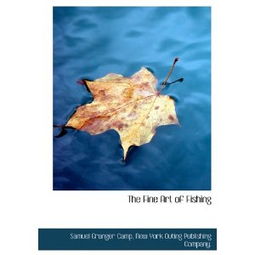Mastering the Art of Jigging Fishing: Tips and Experience
Jigging fishing, often referred to as "jigging" or "jigging fishing," is a popular and highly effective method of catching fish, particularly in deeper waters or during the colder months when fish tend to hold deeper. Whether you're a seasoned angler or a beginner looking to add a new technique to your arsenal, mastering the art of jigging can elevate your fishing experience. In this article, we'll delve into the basics of jigging, provide you with essential tips, and share some personal experiences to help you on your way to becoming a jigging expert.
Understanding Jigging
Before diving into the specifics of the technique, it's important to understand what jigging is. Jigging involves the use of a specialized fishing rod, reel, and lure called a "jig." The lure is designed to mimic the movement of a struggling prey, and the angler manipulates the rod to create a lifelike motion that attracts fish.
Essential Equipment
To get started with jigging, you'll need the following equipment:
Rod and Reel: A dedicated jigging rod is crucial for the technique. These rods are typically lightweight and have a fast action, which allows for quick and precise movements. A matching jigging reel is also important, as it should be capable of handling the weight of the lure and the fight of the fish.
Lures: Jigging lures come in various shapes, sizes, and colors. Some popular types include soft plastics, metal jigs, and swim jigs. The choice of lure depends on the type of fish you're targeting and the conditions of the water.
Line: For jigging, you'll need a strong and flexible line that can handle the weight of the lure and the fish. Monofilament, fluorocarbon, or braided line can be used, depending on your preference and the conditions.
Tackle: This includes hooks, swivels, and split rings. Ensure that your tackle is in good condition to prevent any snags or breakages during your fishing trip.
Basic Jigging Technique
Once you have your equipment, it's time to learn the basics of the jigging technique:

Cast: Begin by casting your lure out into the water. The cast should be smooth and controlled, ensuring that the lure lands softly.
Reel In: After the lure has reached its intended depth, start reeling in slowly. The speed of the reel should be consistent to maintain the desired action of the lure.
Jigging Motion: As you reel in, make short, sharp taps on the rod tip. This creates a twitching motion that mimics the struggling prey. The frequency and intensity of the taps can be adjusted based on the type of fish and the water conditions.
Letting Go: After a few taps, let the lure fall back to the bottom or a desired depth. This allows the lure to rest and then resume the jigging motion.
Patience and Observation: Jigging requires patience. Wait for a bite, which can be felt as a tap or a tug on the line. Once you feel a bite, set the hook quickly and smoothly.
Advanced Tips
Once you've mastered the basic technique, here are some advanced tips to improve your jigging experience:
Leader Length: Adjust the length of your leader to the depth you're jigging. A longer leader can help maintain the desired action of the lure.
Water Conditions: Understand the water conditions and adjust your technique accordingly. In murky water, brighter colors may work better, while in clear water, natural or subdued colors might be more effective.
Timing: The timing of your taps is crucial. Experiment with different rhythms and timings to see what works best for the fish you're targeting.
Lure Selection: Experiment with different types of lures and colors to see what triggers the most bites. Sometimes, the smallest changes can make a big difference.
Personal Experience
In my own experience, jigging has been a game-changer for my fishing trips. I remember my first time trying it, I was skeptical about the technique. However, after a few successful catches, I was hooked. The thrill of feeling the rod twitch and then watching the fish strike is unparalleled.
One memorable experience was during a cold winter day. The water was choppy, and the fish were holding deep. I decided to use a soft plastic lure and jig it at a slow pace. After about 15 minutes of patient jigging, I felt a solid tap. I set the hook, and to my surprise, I had landed a nice-sized bass. That moment solidified my love for jigging.
Conclusion
Jigging fishing is a technique that requires practice, patience, and a keen understanding of the water and the fish you're targeting. By following the tips and experiences shared in this article, you'll be well on your way to mastering the art of jigging. Remember, the key is to experiment, learn from each trip, and enjoy the process. Happy jigging!












